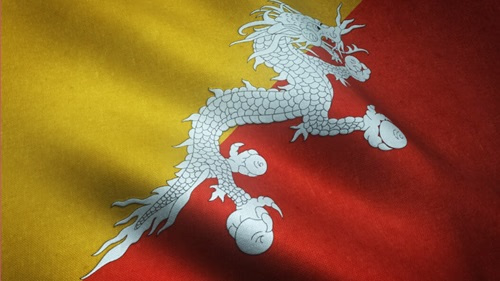
Bhutan, popularly known as the Land of the Thunder Dragon, offers a unique blend of rich cultural heritage, stunning landscapes, and spiritual tranquillity. It is a beautiful country filled with friendly locals, colourful festivals, and tall monasteries.
When planning a trip to the Himalayan kingdom, it's always a good idea to know the top Bhutan cities that promise unforgettable experiences. From vibrant markets to serene valleys, here's a list of must-visit towns that showcase the best of Bhutan and will leave you with lasting memories.
1. Thimphu
Thimphu is the centre and biggest city of Bhutan, a premiere spot for Bhutanese culture and modernity. With so many places to visit in Thimphu, visitors can explore the grand Tashichho Dzong, the official seat of the Druk Desi (the head of government) and the National Memorial Chorten, a prominent religious structure.
The busy weekend market offers a taste of local life, with various traditional handicrafts and fresh produce. Thimphu also hosts the annual Thimphu Tshechu festival, a colourful event featuring mask dances and religious performances that provide a deep insight into Bhutanese traditions.
2. Paro
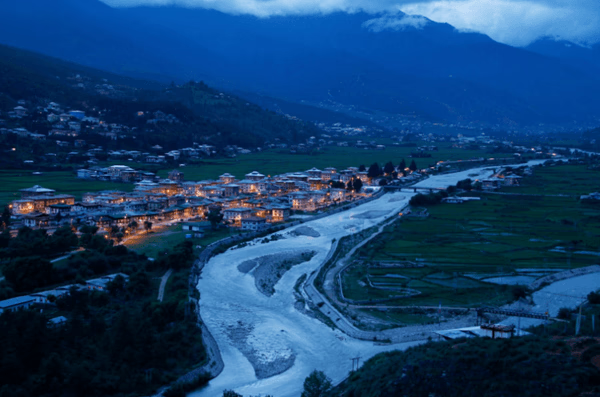
Paro is home to the invaluable Paro Taktsang (Tiger's Nest Monastery), perched dramatically on a cliffside.
This picturesque city is also known for the Paro Dzong (Rinpung Dzong), an impressive fortress and monastery. There are so many places to visit in Paro, with The Paro Valley's natural sceneries and traditional farmhouses being one of the best destinations.
Paro International Airport, Bhutan's sole international airport, is also located here, making it a primary entry point for visitors. The National Museum of Bhutan, housed in the Ta Dzong, offers a fascinating collection of Bhutanese art and artefacts.
3. Punakha
Punakha, the ancient capital of Bhutan, is famous for the stunning Punakha Dzong, located at the intersection of the Pho Chhu and Mo Chhu rivers. This city is also a gateway to the beautiful Punakha Valley, where visitors can enjoy peaceful walks through terraced fields and quaint villages.
The Punakha Suspension Bridge is regarded as one of the longest suspension bridges in Bhutan that offers breathtaking views and is an adventurous spot for photography enthusiasts. The annual Punakha Drubchen and Tshechu festivals are significant cultural events that draw numerous visitors.
4. Bumthang
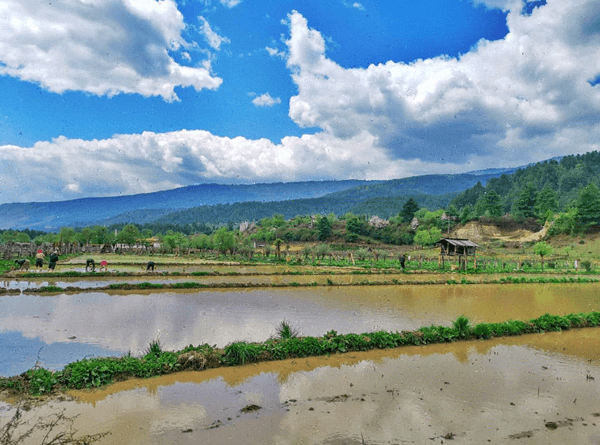
Often referred to as Bhutan's spiritual heartland, Bumthang is a region comprising four valleys: Chokhor, Tang, Ura and Chhume. Jakar in Bumthang is known for its sacred monasteries and temples, including Jambay Lhakhang and Kurjey Lhakhang.
The serene landscape and spiritual significance make it a must-visit. Bumthang is also renowned for producing honey, cheese and apples, providing a unique culinary experience. The Ura Yakchoe festival, celebrated in the picturesque Ura Valley, showcases traditional dances and rituals.
5. Trongsa
Trongsa is historically significant as the ancestral home of Bhutan's royal family. The Trongsa Dzong, one of the largest fortresses in Bhutan, dominates the skyline and offers panoramic views of the surrounding valleys. The city is also a good base for exploring the central regions of Bhutan.
The Ta Dzong, now a museum, provides insights into the history and culture of the region. The annual Trongsa Tshechu festival, with its vibrant dances and mask performances, attracts visitors seeking to experience Bhutanese culture firsthand.
6. Phuentsholing
As the gateway to Bhutan for those entering by land from India, Phuentsholing offers a blend of Bhutanese and Indian cultures. The city is known for its vibrant markets and the serene Karbandi Monastery, which provides a peaceful escape and a vantage point for breathtaking views.
Phuentsholing also houses the Bhutan Gate, a striking example of Bhutanese architecture that marks the border between India and Bhutan.
7. Haa
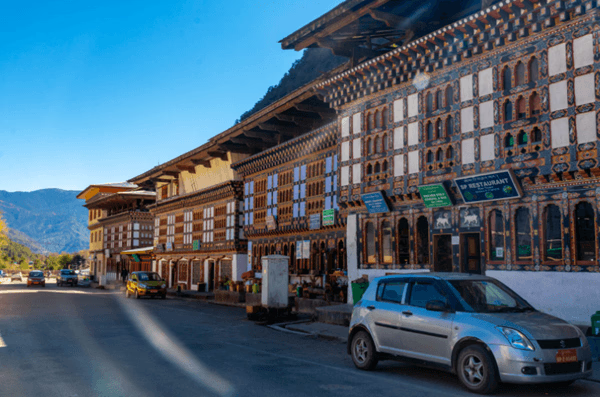
Haa is one of Bhutan's most miniature and least visited districts. Its green mountains and intricate villages offer a tranquil escape. The Haa Valley is perfect for hiking and exploring the region's rich cultural heritage.
The annual Haa Spring Festival is a highlight, showcasing local customs, sports and cuisine. The Black and White Temples, Lhakhang Karpo and Lhakhang Nagpo are significant religious sites that add to the spiritual allure of the valley.
Haa's serene environment and scenic beauty make it an ideal destination for nature lovers.
8. Wangdue Phodrang
Wangdue Phodrang, located in central Bhutan, is known for the Wangdue Phodrang Dzong, which is currently under reconstruction after a devastating fire.
The district is also famous for its bamboo products and slate carvings. The scenic Phobjikha Valley, a winter home to the endangered black-necked cranes, is nearby.
The Gangtey Monastery, located in Phobjikha Valley, offers a peaceful retreat and breathtaking views of the surrounding landscapes. The annual Black-Necked Crane Festival, celebrated in Phobjikha, raises awareness about the conservation of these majestic birds.
9. Samdrup Jongkhar
In southeastern Bhutan, Samdrup Jongkhar is a commercial hub and entry point from India. With its busy markets and diverse cultural influences, the city offers a different perspective of Bhutan. It's also a starting point for exploring the remote eastern regions of Bhutan.
The Mithun Breeding Farm, known for breeding Mithun cattle, is a unique attraction in the area. The Samdrup Jongkhar Dzong, though relatively modern, reflects Bhutan's traditional architectural style.
10. Mongar
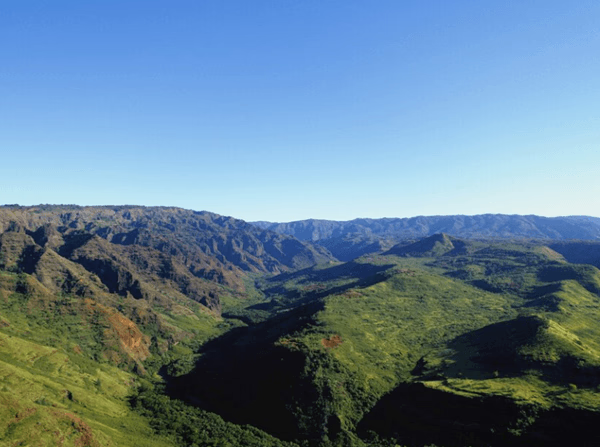
Mongar, situated in eastern Bhutan, is known for its beautiful landscapes and vibrant festivals. The Mongar Dzong, a modern architectural marvel, proudly overlooks the town. The region is also a gateway to Lhuntse, another district rich in traditional Bhutanese culture and history.
The annual Mongar Tshechu festival is a major cultural event featuring traditional dances and rituals. Mongar's lush landscapes and pleasant climate make it the perfect spot for nature walks and bird watching.
Conclusion About The Bhutan Cities
These Bhutan cities each offer a unique glimpse into the kingdom's rich environment and welcoming culture. Whether seeking spiritual enlightenment, historical exploration or breathtaking scenery, these cities provide an unforgettable journey through Bhutan.
For personalised travel packages and expert guidance on your Bhutan adventure, visit Druk Asia and start planning your trip today.
Frequently Asked Questions About The Bhutan Cities
What Type Of Accommodation Can I Find In Bhutan's Cities?
Bhutan cities offer a wide range of options to stay, from luxury hotels and resorts to budget guesthouses and homestays. Many accommodations are designed in the traditional Bhutanese style, providing a unique cultural experience for visitors.
What Local Cuisine Should I Try In Bhutanese Cities?
Bhutanese cuisine is known for its spicy and flavourful dishes. Visitors should try traditional dishes like Ema Datshi (chilli cheese), Phaksha Paa (pork with red chillies) and Jasha Maru (spicy chicken). Most cities have restaurants and eateries where these dishes can be enjoyed.
Are There Any Special Shopping Experiences In Bhutan Cities?
Yes, Bhutanese cities offer unique shopping experiences where visitors can buy traditional handicrafts, textiles and souvenirs. Thimphu and Paro have vibrant markets and shops selling hand-woven fabrics, thangkas (religious paintings) and wooden carvings.
How Safe Are Bhutanese Cities For Tourists?
Bhutan is generally known as one of the safest countries for tourists. The cities are generally safe, with low crime rates. However, taking standard precautions, such as keeping valuables secure and aware of your surroundings, is always advisable.
